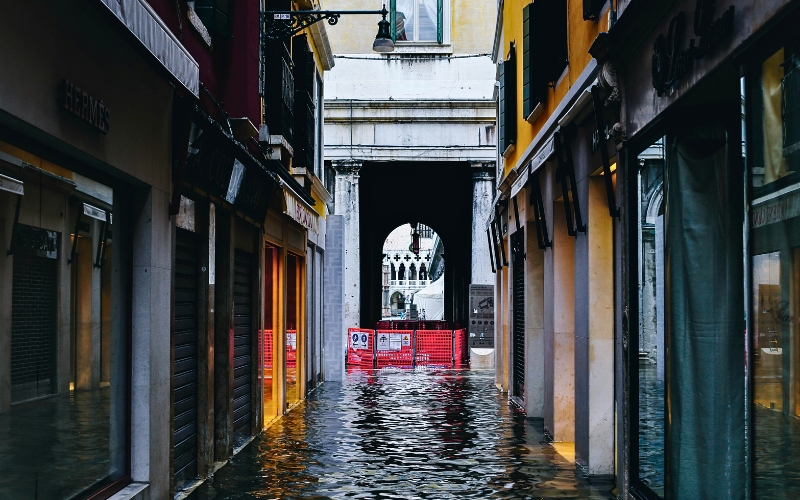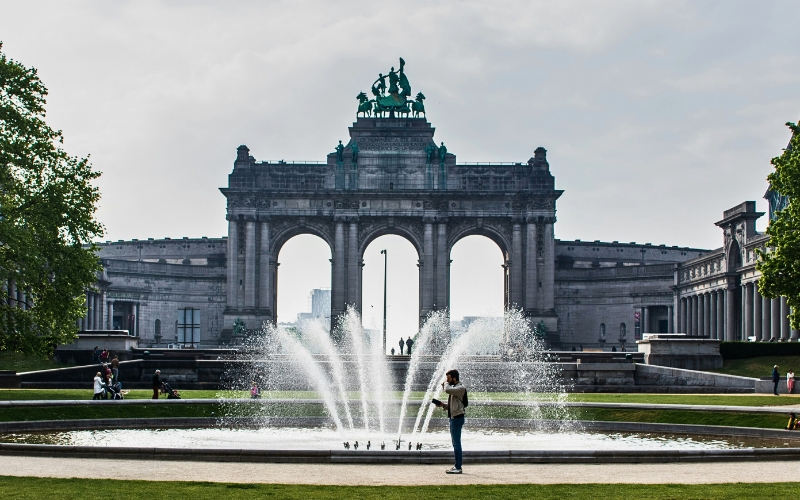
The European Commission has set a course for a water resilient future with the launch of its Water Resilience Strategy. Having already voted to adopt the strategy, European Union member states now have a framework guiding their efforts to manage water security for their residents, business and for the natural world. Let’s find out more about the strategy.

The simple truth is that without water resilience we are doomed. Sounds scary, right? But it’s true. The report opens with one ominous statement: Water is life. And that’s true. Most things on our blue planet depend on water: People, plants, animals, insects, all interconnect and depend on water. Our food, our energy, our economies, all depend on water. Quality of life depends on a stable supply of water of the right quality. And all this is under threat, as the report makes clear, by 2030 global water demand will exceed available resources by 40 per cent. That’s a large shortfall.
Europe needs to ensure water security and be prepared for water-related disasters.
Resilience isn’t just about having enough water, it’s also about being able to deal with having too much, and in the wrong places at the wrong time. It’s about how clean that water is and how to treat wastewater. Europe is the Earth’s fastest warming continent due to climate change. The northwest of England has suffered drought conditions. Ireland has suffered drought conditions. Paris as well, to name but three places that might seem immune from water scarcity issues.
Water resilience is a matter of security and crisis preparedness for the EU.

Climate change is changing weather patterns, from extreme heat and droughts to flooding events. Forest fires, erosion and storms can all disrupt water supply and quality, affecting the health of humans, plants and animals, and can have detrimental economic affects on businesses.
As outlined in the Preparedness Union Strategy, security of clean and affordable freshwater supply must be “a guiding priority” for the Union.
The good people at Politico put together a handy report that summarised the state of water in the EU ahead of the strategy’s launch. Some of the headline statistics make sober reading:
If we fail to act, the following statistics might also cause some reflection: Worldwide, water-related disasters displaced 40 million people and inflicted more than €480 billion in damages in 2024.
Droughts could cause annual damages of €12-15 billion by 2050.
Yes and no. Water in the EU is covered by many, and I mean many different pieces of legislation. The strategy takes account of the fact that each member state has “organised water management in different ways, involving various forms of public or private ownership, or a combination of the two”. As such, the strategy recognises that that one size does not always fit all, especially when each member state will face different levels and sources of vulnerability. There is an acknowledgement that existing “EU legislation and policies, including the European Green Deal, provide a strong basis” for achieving the goals of the strategy.
To pick out just a few of these other existing documents you might look at the Water Framework Directive, the Flood Management Directive, Urban Wastewater Directive, the Nature Restoration Regulation, the Zero Pollution Action Plan, the Drinking Water Directive, then you might also look at River Basin Management Plans and Flood Risk Management Plans, even the Marine Strategy Framework Directive. You could argue that all of these form resilience frameworks.
EU legislation and policies, including the European Green Deal, provide a strong basis” for achieving the goals of the strategy.
That one’s easy, at the highest level it sets out a means for achieving a water resilient Europe. In short, providing water security for everyone. There are three overarching aims:
Build a water-smart economy to boost competitiveness, attract investment and promote the EU’s water industry.

By everyone working together, that’s how. And that means citizens, businesses, civil society, nature groups, and administrations committing to working better together. No more silos! The EU will support this effort with actions across five areas, which are paraphrased below:
Achieving water resilience will depend on enhanced implementation of the comprehensive EU water legislation, as well as stronger synergies with policies in sectors such as agriculture, industry, energy, transport and consumer protection. It will require better and more enforcement. At the same time, rules need to be simplified to improve implementation. Planning must be water-smart to aid the green and digital transition and cross-border cooperation needs to be improved.
Without significant additional public and private investments in all stages of water management, progress towards water resilience will be too slow or lack meaningful impact. More on this below.
This has significant potential for revolutionising water management and promoting sustainable water use. To unleash this largely untapped potential, and building on the upcoming Communications on Data Union and on Apply AI, the strategy commits the Commission to create an action plan to overcome analogue and legacy systems. There is also provision for a “one-stop shop” for Earth observation products relevant to water management will make managing water from space accessible to everyone.
Specifically, to boost collective resilience Climate-driven threats and biodiversity losses, malicious attacks linked to the disruption of critical water infrastructure and supply, alongside accidental pollution of inland and marine waters have been identified as key water risks by member states. Many tools exist in the EU to protect the population from water-related disasters, or mitigate the impact, yet they are not always sufficiently known or used. Knowing and addressing weaknesses will help make Europe more resilient.
Without significant additional public and private investments in all stages of water management, progress towards water resilience will be too slow.
Nothing comes for free and there really isn’t a choice when it comes to water security. However, the strategy does have some financing suggestions. The Commission has proposed a package of measures to encourage member states and regions to invest in water resilience, including up to 100 per cent of EU financing and 30 per cent of prefinancing in water resilience investments, as well as various flexibilities. This will be combined with technical assistance to help members use the funding effectively. Further support is likely to be announced in later frameworks.
This will be combined with technical assistance to help members use the funding effectively.
Good question, the strategy states that the Commission will enhance its cooperation with the European Investment Bank Group (EIB) with the intention of increasing public and private investments in water, both in the EU and globally. The EIB Group has developed a programme to support the strategy with over €15 billion in planned financing during 2025-2027 for projects enhancing access to water, pollution control, resilience and competitiveness of the EU water sector, including through large infrastructures and nature-based solutions.
The Commission and the European Investment Bank will join forces to address bottlenecks for deploying water investments. This will include the proposal of a new Sustainable Water Advisory Facility to finance EIB technical assistance in building the pipeline of projects as well as better quantifying funding needs and options to facilitate water investment. At the same time private investment will need to be significantly stepped up, which is something the Commission is actively trying to address, for example, with the creation of a Water Resilience Investment Accelerator to implement 20 pilot innovative cases for natural water retention and water efficiency, bringing together local water investors, solution providers and problem holders to inspire similar actions across the EU.
Private investment will need to be significantly stepped up.
Clearly, there’s still much to finalise and sort out, although the proposals for a resilience strategy have been in circulation for a while. The EU Commission has called on all key stakeholders to action along the lines of the strategy. When it comes to assessing the strategy, the Commission will convene a Water Resilience Forum every two years to take stock of what is working and what needs improvement. In 2027, a mid-term review will determine how much progress is being made with the possibility that some of the actions might be revised or updated.